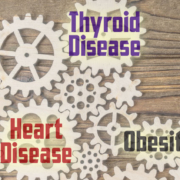Why Nutrition Is a Process
A celebrity doctor who specializes in cancer treatment said something that caught my attention, and it goes to this question: why are some people cured by specific treatments while others don’t respond at all? In his opinion, it’s because the cancer creates a new system in the body that competes with the other systems.
The new system may be different in each body once the cancer is established, which could mean that everyone really requires an individual approach. A systems approach would be necessary only if the cancer gets too established; early diagnosis can use treatments that work in most people. Late diagnosis means the cancer has established a system with strengths and weaknesses that are unknown. But the systems approach isn’t limited to cancer.
What’s a Systems Approach?
A systems approach is simply this: we attempt to reach a goal by looking at the interactive nature and interdependence of all the factors in an entity.
Here’s an analogy: you flip the switch for the light in your kitchen, but the light doesn’t go on. What could be wrong? The light won’t work if:
- Your bulb is burned out
- Your circuit breaker needs to be reset
- An electrical outlet somewhere has a tripped GFCI
- Your switch has gone bad
- A wire is loose in your light fixture
- The power is out to your whole house
Turning on a light is easy—my grandson Riley is very good at it and he’s not even three. But if it’s not working, you have to look at each element of the system to find the problem and get the kitchen light back on.
How Vitamin D is Part of Your Bone Health System
While osteoporosis or weight gain doesn’t create a new system like cancer does, there are numerous steps in both processes. On top of that, if we’ve been on the path to bone loss or weight gain, there may be changes in normal metabolism that have to be overcome.
Let me explain using vitamin D for bone health. Whether we make vitamin D in our skin, get it from food, or take it in supplement form, it has to be processed by the liver to become the active form to promote bone growth. If there’s a defect in getting the raw vitamin D from food or a supplement into the bloodstream and on to the liver, not enough vitamin D would be made into the active form. Or there may be a defect in the processing of the raw vitamin D once it gets to the liver. Or there may a defect in the receptor for the active vitamin D on the target tissue. I could go on and on about where issues could occur, but I hope you get the point. Right now, we have no idea where the issue might be for the use of vitamin D in an individual just as we don’t know where the weak point of a cancer system might be and thus where we should attack.
Do we quit? No. We simply use a systems approach—we look at every step necessary to reach our goal and what we can do at each step. We begin with taking vitamin D for a specific period of time. We then get re-tested, most likely a bone density scan. If there’s growth, great. If there’s not, then we either add more D or add calcium or switch to a different form of calcium. Then retest. If that doesn’t work we can add vitamin C or glucosamine, both critical to the manufacture of connective tissue. There are other factors such as smoking and exercise that also impact bone growth. We systematically add new variables or add more of some that we’re already doing. Might this take a long time? Yes. Would we have to pay attention? Yes. But is it a natural approach to complicated conditions? Again, yes. No matter what the condition, if you’re going to try to deal with it nutritionally, that’s the approach you’ll have to take. You have to find what works for you.
The Bottom Line on Vitamin D
The systems approach goes a long way to explain why some people benefitted from vitamin D and calcium to prevent fractures and others did not. The only fact the meta-analysis study proves is that vitamin D and calcium supplementation don’t work for everyone. The key is to move on to the next approach; it may be different supplements or it may even be a medication. More options must be tried until a solution is found for each individual.
Over time, I’m going to continue to explore this concept of a systems approach to nutrition. I have no idea where it will lead, but it’s worth spending more time thinking and researching it.
What are you prepared to do today?
Dr. Chet
Reference: JAMA. 2017;318(24):2466-2482. doi:10.1001/jama.2017.19344.









